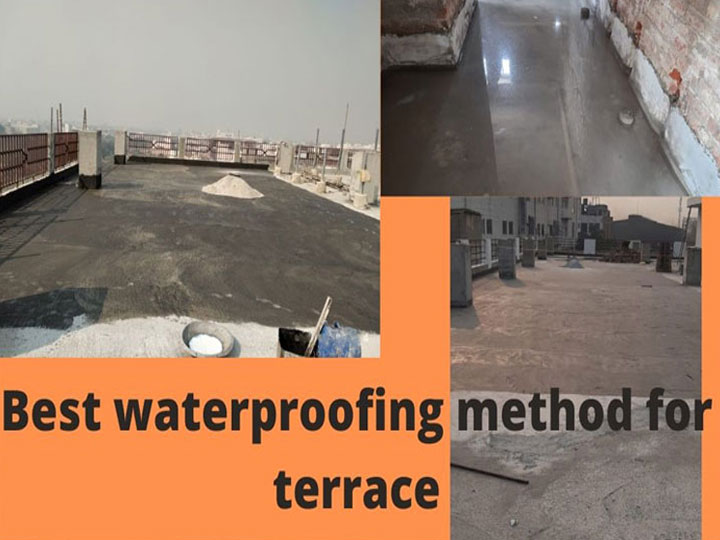Preventing leakage and seepage of water from the roof of rooms is a major concern in the long run for every building, especially for those which are in rainy climates, or are adjacent to wet rooms like bathrooms. Today, we will discuss the methods of terrace waterproofing and how to make your terrace and roof stop soaking.
A standard cement terrace is not a bad repellant of water if it doesn't stagnate. That is why walls rarely soak even in rainy climates, because the water flows off the wall. However, water seepage and soaking of moisture starts when the water does not roll off the surface but stays there.
This can happen due to many causes, but mostly it happens because of wrong sloping of the roof or terrace, which leads to water stagnation in places. Of course, the quality of the slab plays a major role in the waterproofing quality of the terrace in question as well, but few concretes' quality can stand up to prolonged stagnation of water.
That is why we need to waterproof the terrace. So, without further ado, let's see in how many ways we can prevent water seepage from terraces and roofs. There are mainly four ways to waterproof a terrace, which are:
It is possibly the cheapest and easiest way to waterproof small terrace areas of simple buildings, temporarily. The idea is simply to lay a large piece of polyethene or tarpaulin on top of the roof and then sealed with soil or other materials. Afterwards roof tiles are placed over it to make a rolling surface. Needless to say, this type of waterproofing can be done only on very basic types of roofing, like in rural buildings.
A very common method of waterproofing, this method of waterproofing terrace is very popular around the world in warm climates like India. When you use cementitious waterproofing, you need to use chemicals and cement to waterproof the terrace. This is useful only for building parts with concrete slabs and concrete walls.
The process begins with cleaning up the slab first. clean the whole slab and make sure that there is no grease and oily substance on the slab which can make obstacles to set cement and chemical on the slab. If there exists any cracks, holes, and patches on the slab, then carefully fill the crack and holes with cement and waterproofing chemicals.
Now proceed to applying the waterproofing substance on the slab. There are plenty of those in the market, like waterproofing chemical Tapecrete, Tuffcrete, Acrylic additive, 301 URP, etc. Tapecrete seems to be the best choice for general-purpose such work; however, each substance has their own pros and cons and therefore you should always check what you need versus what you get.
Mix the cement and the waterproofing substance as described by the provider, then proceed to applying two coats of the mix to the slab. The coats should be drawn at right angles to each other, meaning if you have applied one coat by drawing the brush from east to west, the second coat should fall from north to south.
Let the coating dry for a day. Now you are ready to apply a mortar of 1:4 ratio to seal up the waterproofing, up to 10 mm only.
This is a better way to waterproof terraces, but it is definitely much more costly. But if you care about quality and the long run, you will choose this over other methods. It starts just as the previous method of waterproofing - by cleaning up the surface and patching up all cracks and holes.
The primary weapon here is a polyurethane waterproofing chemical, which is sold under many brands but more or less is the same thing everywhere. After patching up all the irregularities, clean up the slab a second time very carefully, and then start applying the chemical.
The chemical is applied directly and isn't mixed with anything. Read the instructions on the package carefully before you start the work; the particular brand may need some different ways. Either way, it should take 1 to 3 hours to dry and apply another coat perpendicular to the first coat draw. The slab may take a day to get usable.
This method is a rather harsh but very effective way to cover large areas of terrace waterproofing. In this process, the surface is cleaned and fixed first, and then bitumen, tar, or coal film is applied to the slab.
The bituminous substance is first boiled in a drum and then spread over carefully. The first coat is a sprinkling of the substance rather than brushing, and then a mesh is applied over the first surface and then the second coat is applied with brushes. This is effective and long lasting, and cost-effective over large areas.
